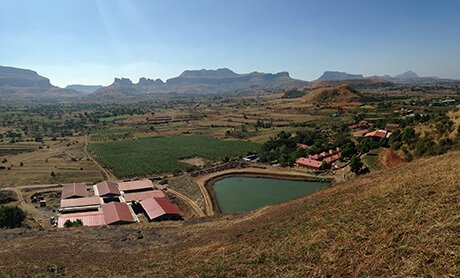This bandha relates to mooladhar chakra and is termed as moola bandha. Moola means root or source.
This bandha is best performed in siddhasan as it helps give an automatic Moola Bandha and creates more awareness in this region. If siddhasan is difficult then one can sit in Padmasan or any other meditative asana.
Tones the reproductive system and helps regulate the menstrual cycle
Helps to remove congestive period pain
Stimulates prana in the pelvic region, promoting health
Strengthens the pelvic muscles which is helpful during pregnancy
Post natally it tones and strengthens the pelvic floor muscles, speeding up recovery.
Perineal area or cervix.
Mooladhar chakra
Try to relax as much as possible
Keep focused on the point
Hold too long if it’s not comfortable
Have any kind of strain
Stimulates pranic energy
Tones the reproductive, urinary and excretory systems
Realigns the panchkoshas
Tones the pelvic nerves
Helps one to have sexual control
Helps redirect sexual energy so it can be used for other purposes
Can awaken mooladhara chakra
Can help remove fears and take one out of depression
Prevents urinary incontinence
Removes fatigue
Redirects energy in the upward direction.
Preparation for tribandha and pranayama.
Menstrual disorders
Period pain – practiced throughout the month
Infertility
Depression
Avoid during menstruation or if there is any pain when practicing.
Avoid if there is chronic constipation.
Be cautious if one has haemorrhoids.
As many times as is comfortable. The bandha can also be held for up to 5 minutes over time.
If siddhasan is difficult one can slightly bring the foot under the thigh and move the body forward so that the heel more easily presses against the body and improves the moola bandha.
Siddhasan
Tribandha and pranayam
The bandha has been described thoroughly in the third chapter of Hatha Pradipika.
Parshnibhagen sampeedya yonimakunchayet gudam |
Apanmurdhwamakrushya mulbandhobhidhiyate ||
3-61
Meaning -
The heel should press the perineum, the muscles should be contracted and the gas (apan vayu) should be lifted upwards. This results in moola bandha. Further it is described as:
Adhogatimapan va urdhwargam kurute balat |
Aakunchanen tam prahurmulbandham hi yoginah || 3-62
Parnapanou nadbindu mulbandhen chaikatam |
Gatva yogasya samsiddhidam gachshato natra samshayah || 3-63
Meaning -
Apan vayu is generally in the downward direction. With deliberate contraction the apan vayu is lifted upwards. This is known as moola bandha. The bandha is to be performed till the time the gas is forced upwards. Hatha Yoga Pradipika, in further shlokas, describe this bandha as when the prana, apan, the sound and the point (nad and bindu) will merge with each other due to this bandha, then one can be said to succeed in yoga.
The effects of this bandh are described as under:
Apanpranayoraikyam kshayo mutrapurishayoh |
Yuva bhavati vrudhopi satatam mulbandhanat || 3-65
Meaning -
The regular study of moola bandha results in merging apan and prana. The excretions are minimised and an old person turns into a young one. Though, as a matter of practice, an old person may not be transformed into a youth, the general meaning can be guessed as the disappearance of the signs of old age with return of the enthusiasm of youth.
The next four shlokas in Hatha Yoga Pradipika describe how the bandha is related to awakening of Kundalini power. Hatha Yoga Pradipika says that when the apan vayu is forced upwards it enters the vanhimandal. The pressure of this vayu results in increasing the fire. Apan vayu and this fire heat the prana. This results in igniting the fire in the stomach. The kundalini power, which is supposed to be asleep, awakens like a snake hit by a stick. It then enters the sushumna nadi (brahma nadi) like a snake entering its hole. Hence, every sadhaka must study moola bandha regularly.
The thirteenth shloka in the third chapter of Gherand Samhita describes this bandha. The description is as given above as in Hatha Yoga Pradipika.
However, the effects of this bandh are described as:
Mulbandhah paro bandho jaramarannashanah |
Prasadadasya bandhasya sadhayetsarvavanchitam || 3-18
Meaning -
This is a superior type of bandha which results in reversal of old age and the death. The study of this bandha results in fulfilment of any desire. This description is a bit exaggerated but one can understand its importance on health.
| COURSE | Venue |
Phone - +91-9822770727
E-mail - yoga@yogapoint.com or yogapoint108@gmail.com

Yoga Vidya Dham, Kaivalya Nagari,
College Road, Nashik - 422005.
Maharashtra, India.
Phone - +91-9822770727 (for courses in ENGLISH)
+91-253-2318090 (For courses, in HINDI or MARATHI)
(Please call during 9.00 AM to 5 PM Indian Time)
E-mail - yoga@yogapoint.co or yogapoint108@gmail.com
Village Talwade, Trimbak, Nasik
Maharashtra,India.
Phone - +91-9822770727
E-mail - yoga@yogapoint.com or yogapoint108@gmail.com